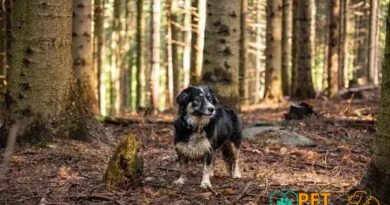Curiosities About the English Setter: Fascinating Traits and History
Curiosities about the English Setter are abundant and captivating. Known for their elegant appearance and friendly demeanor, English Setters have a rich history and unique traits that distinguish them from other breeds. Whether you’re an avid dog lover or simply curious about different breeds, this article delves into the fascinating aspects of the English Setter, including their origin, distinctive characteristics, and their role in modern times.
History and Origin of the English Setter
The English Setter has a rich history that dates back several centuries. Originating in England, this breed was developed by crossbreeding various types of spaniels and pointers. The primary goal was to create a proficient hunting dog that excelled in setting, or crouching down, when it found game birds.
While the breed’s exact origins are somewhat obscured by time, it is known that the English Setter began to take its modern form in the 19th century. Edward Laverack and R. Purcell Llewellin were instrumental in refining the breed. Laverack focused on creating a dog with a distinctive, elegant appearance, while Llewellin concentrated on enhancing the breed’s hunting abilities.
Edward Laverack’s Contribution
Laverack’s English Setters were renowned for their beauty and grace, often excelling in dog shows. His work laid the foundation for the breed standard that many enthusiasts and breeders follow today. These dogs had a distinctive feathered coat, mottled coloration, and a gentle, friendly demeanor.
R. Purcell Llewellin’s Contribution
On the other hand, Llewellin aimed to maintain the breed’s hunting instincts. His Setters had a strong sense of smell and were agile enough to perform well in the field. The Llewellin English Setters became famous for their superior tracking and game-setting capabilities, making them highly sought after by hunters.
Due to these dedicated efforts, the English Setter flourished in both hunting and companion roles. Over the years, their popularity spread beyond England to the United States and other parts of the world, solidifying their place as a beloved and versatile breed.
Unique Traits and Characteristics
The English Setter is known for its striking appearance and gentle demeanor. One unique trait is its feathered coat, which is both elegant and practical. Feathers on the tail, legs, and chest not only add to their beauty but also protect them in the fields. Another notable characteristic is their intelligent gaze. Their eyes often reflect a curious and alert nature, making them excellent hunting companions.
The English Setter’s athletic build allows for agility and endurance. They were bred for stamina, enabling them to work all day without tiring. Additionally, English Setters have a strong sense of smell, which helps them excel in tracking and hunting tasks. These dogs are also known for their loyalty and gentle temperament, making them great family pets.
One cannot overlook the distinctive coloration of the English Setter—often referred to as
English Setter’s Role in Modern Times
The English Setter has gracefully transitioned from its origins as a hunting dog to a companion in today’s world. While they were historically known for their exceptional skills in locating game birds, modern English Setters excel in various roles beyond hunting.
Today, English Setters are commonly seen in therapy and service roles. Their gentle disposition and intelligence make them ideal candidates for offering emotional support and assisting individuals with disabilities. Additionally, their keen sense of smell and high energy levels allow them to participate in search and rescue missions.
Moreover, the breed’s adaptability has made them popular in dog sports such as agility, obedience, and rally. Their athleticism and trainability enable them to compete at high levels, showcasing their versatility and timeless capabilities.
Even as family pets, English Setters maintain an essential role. Their affectionate nature and playful disposition make them excellent companions for households. Their social temperament ensures they get along well with children and other pets, fostering harmonious home environments.




